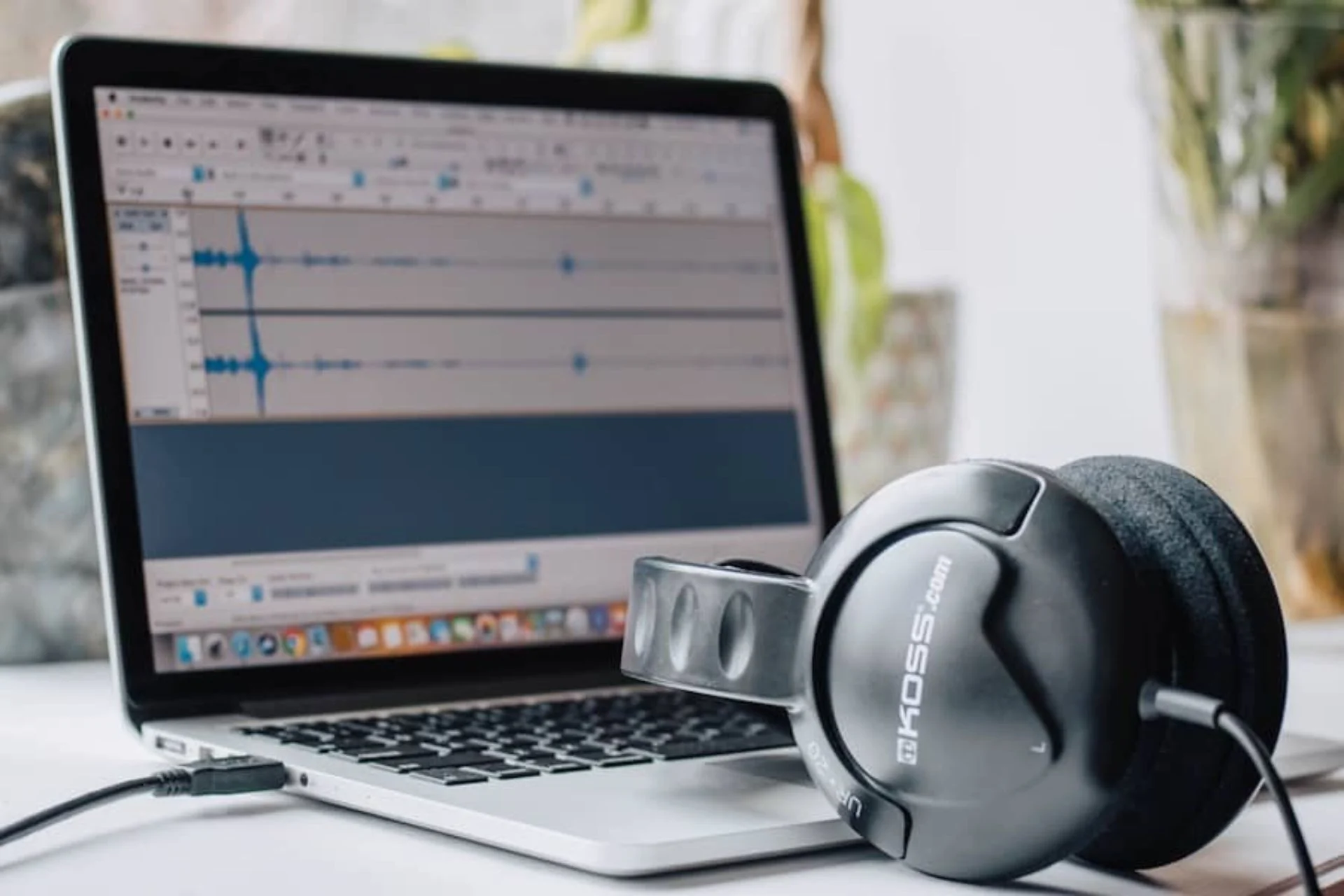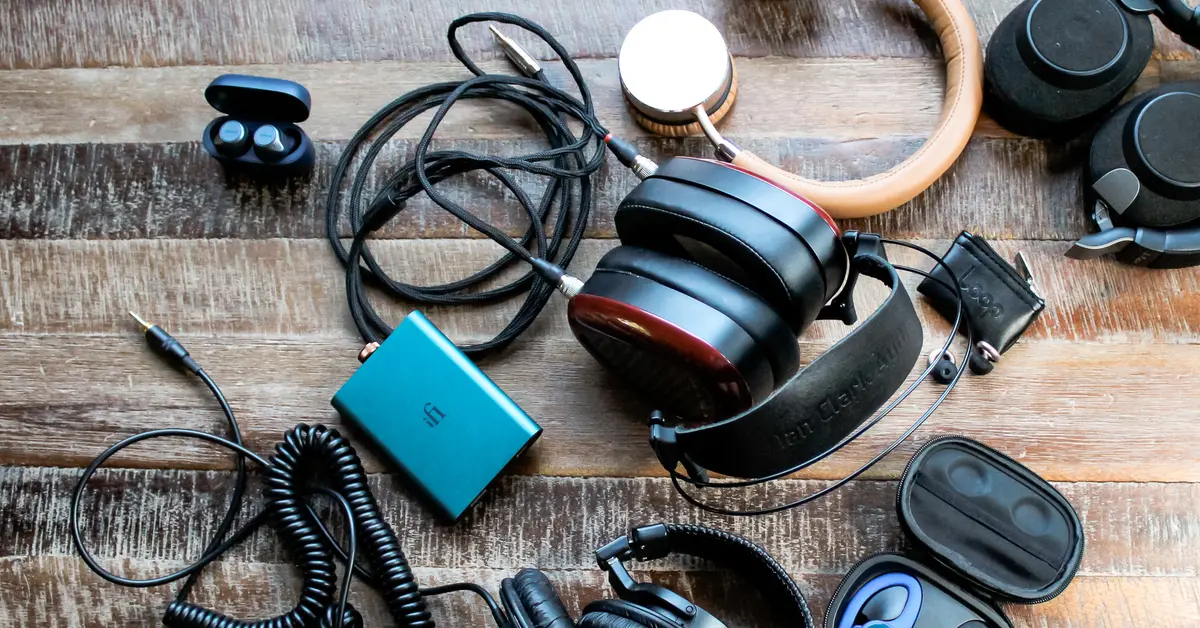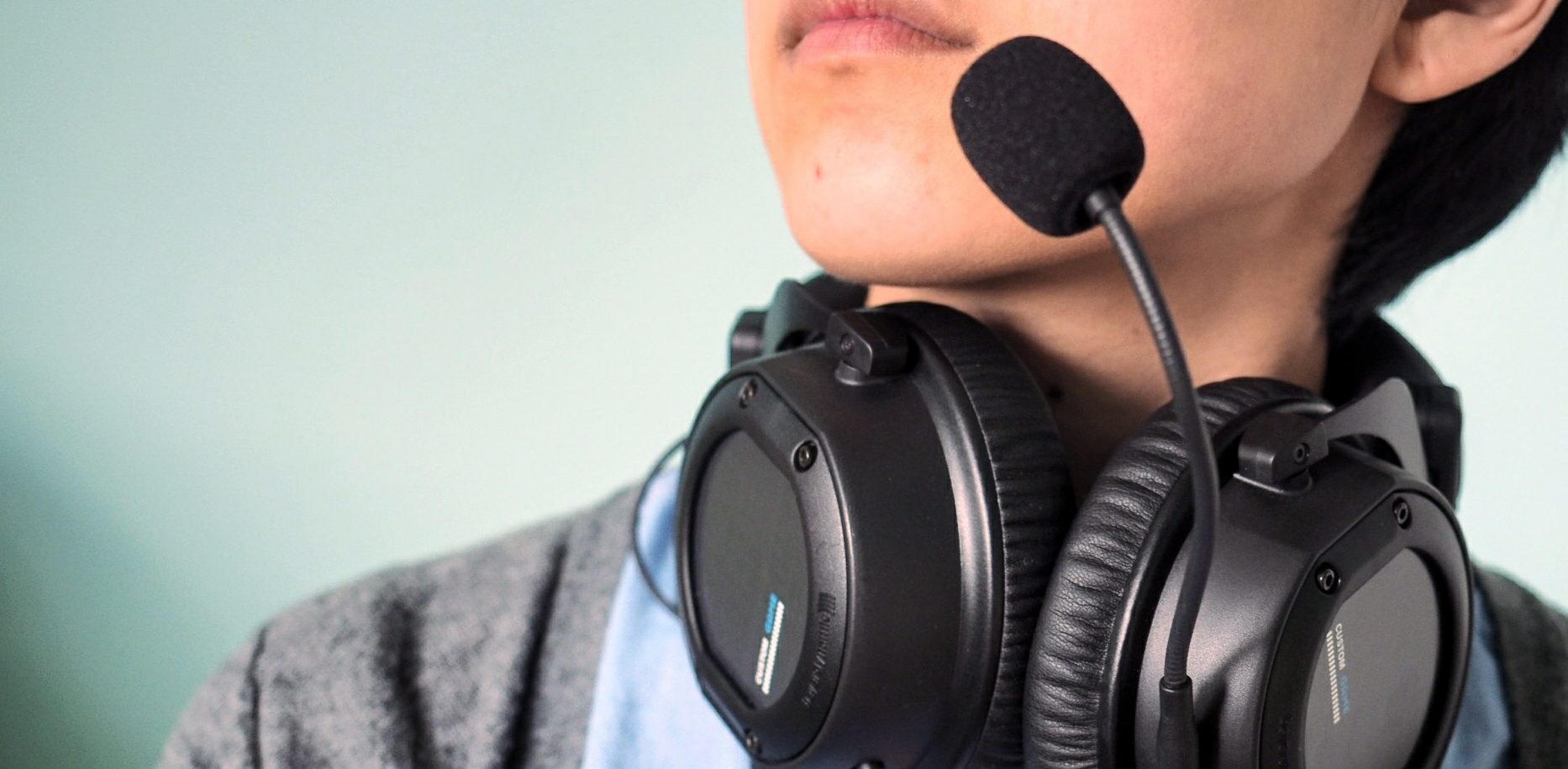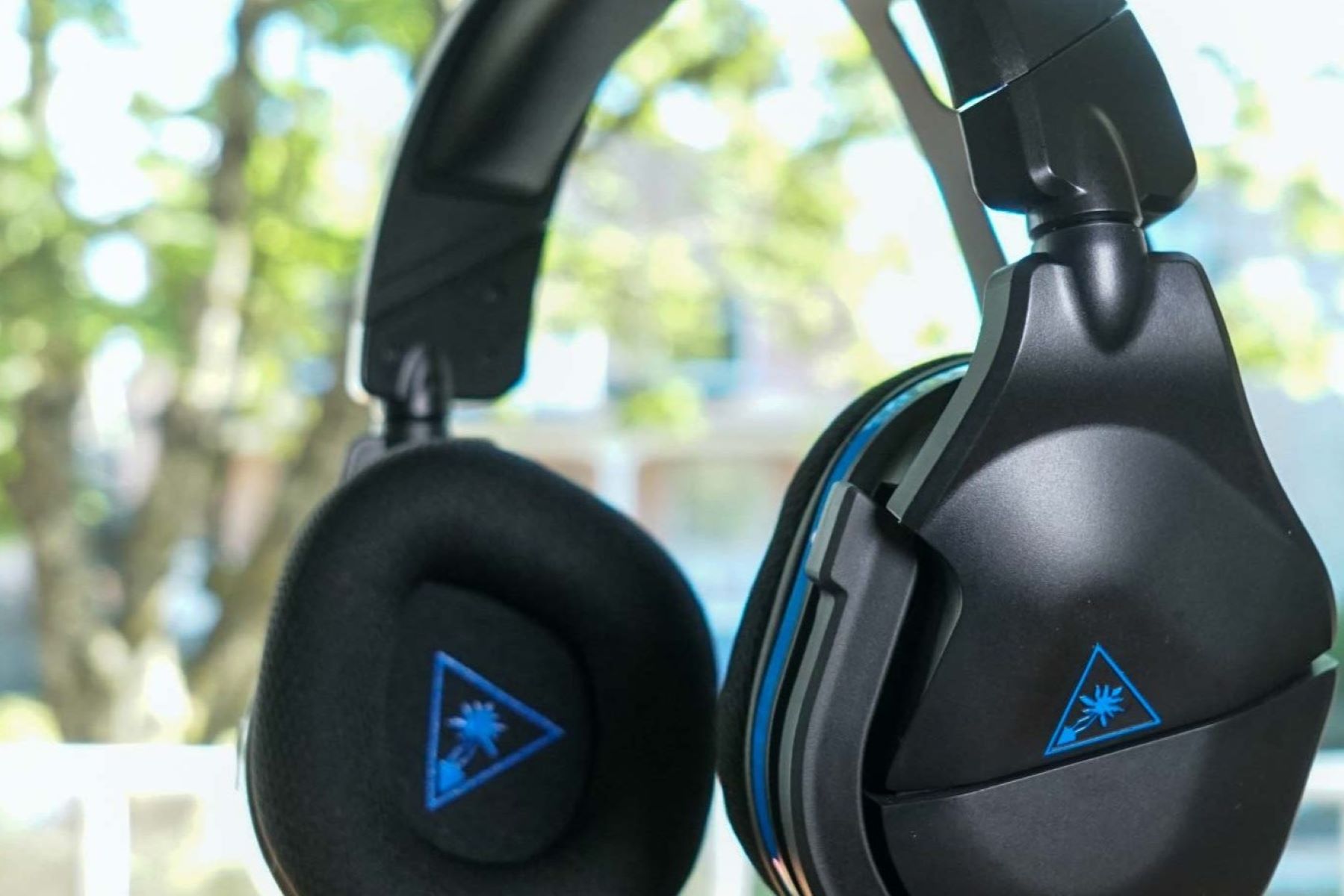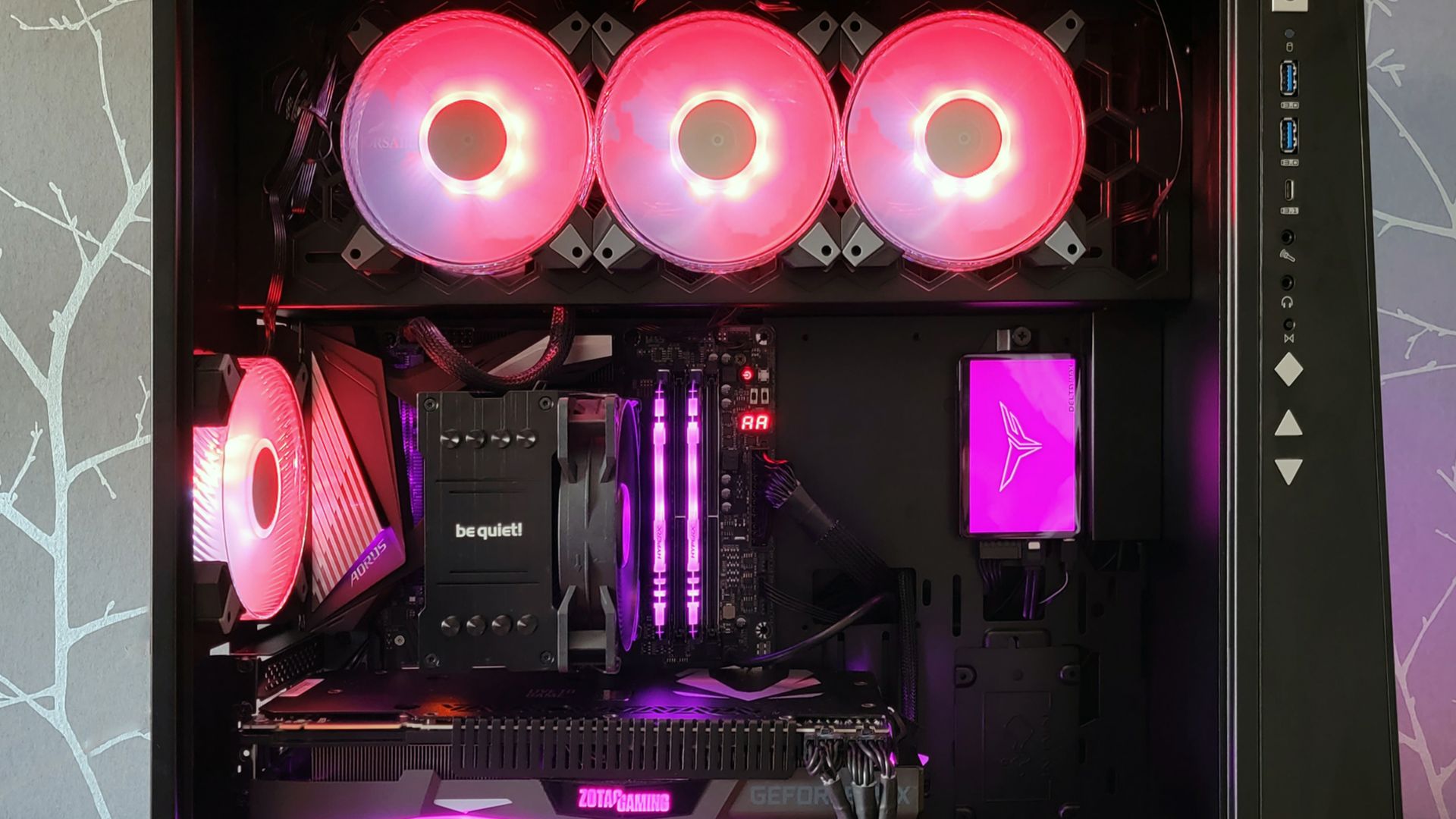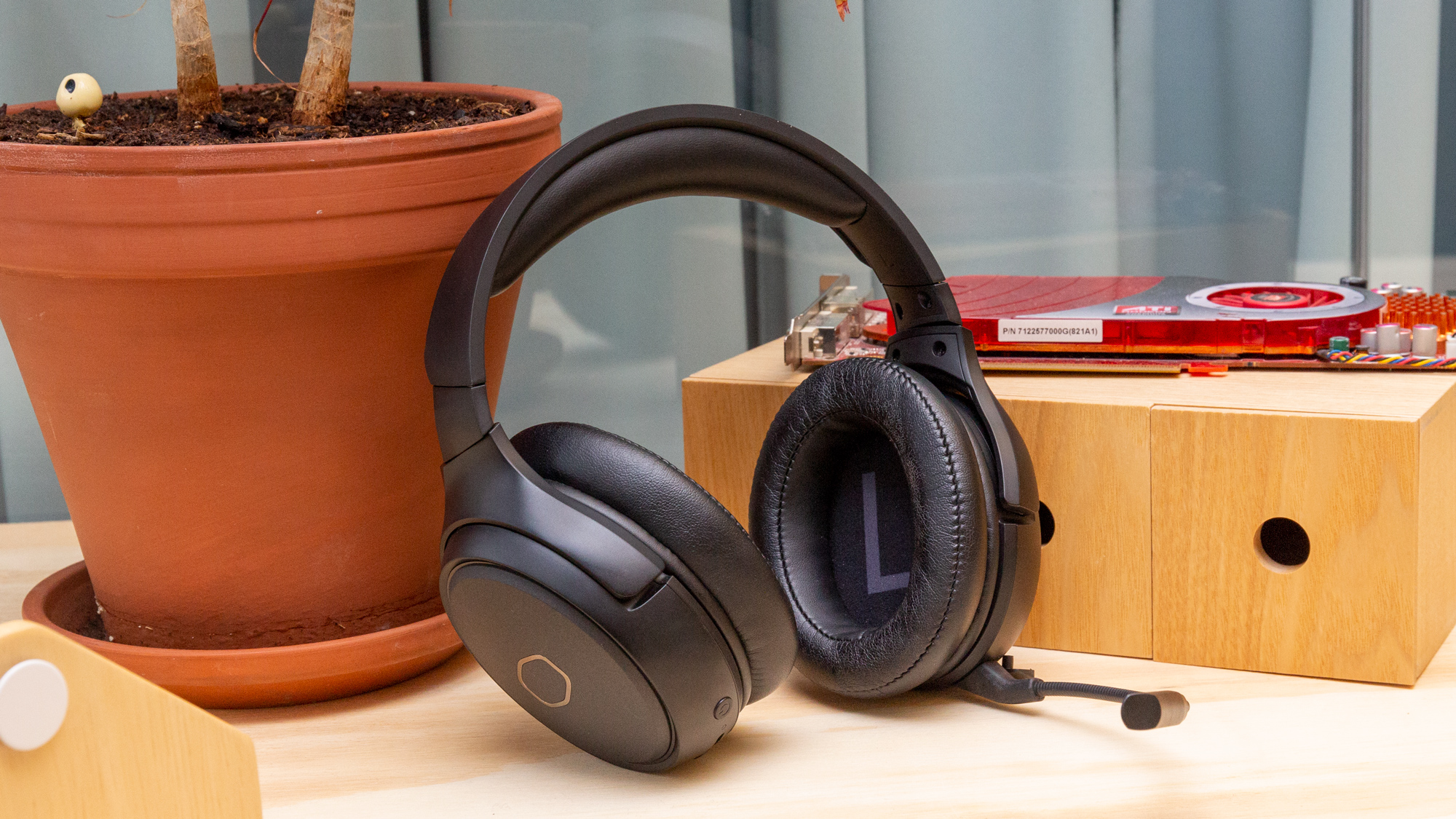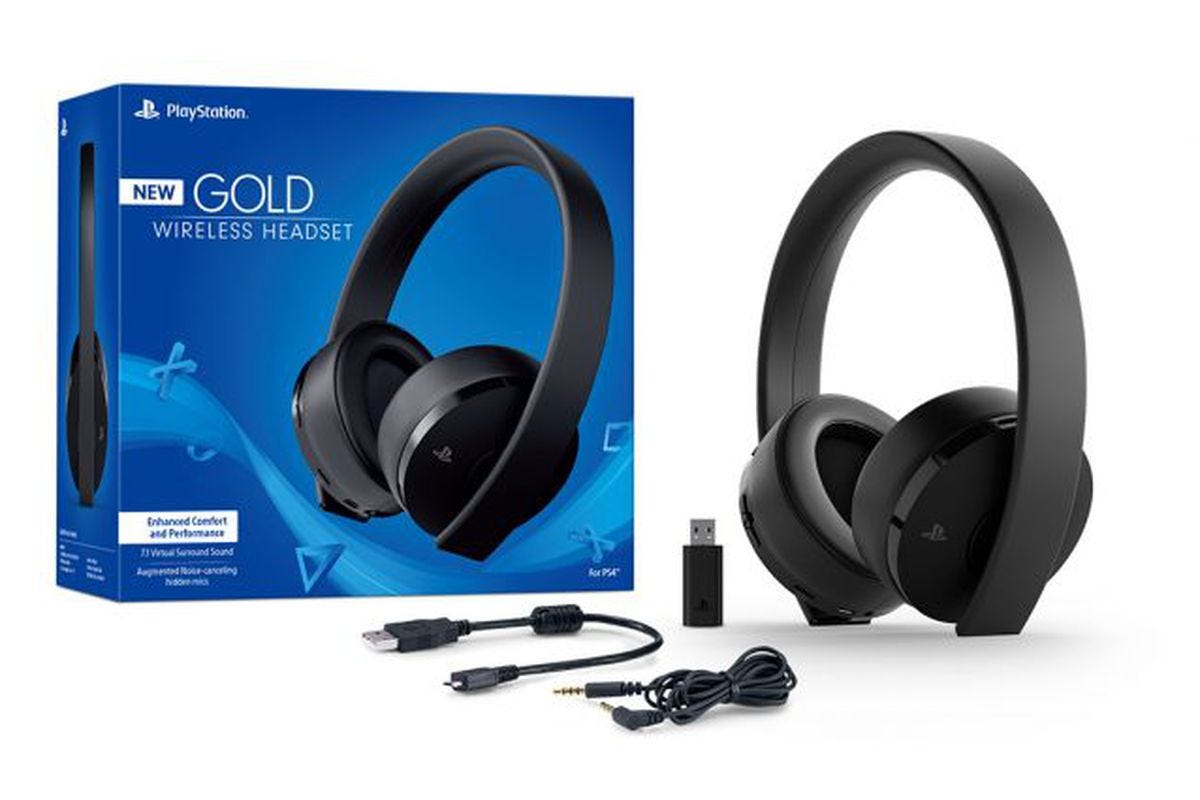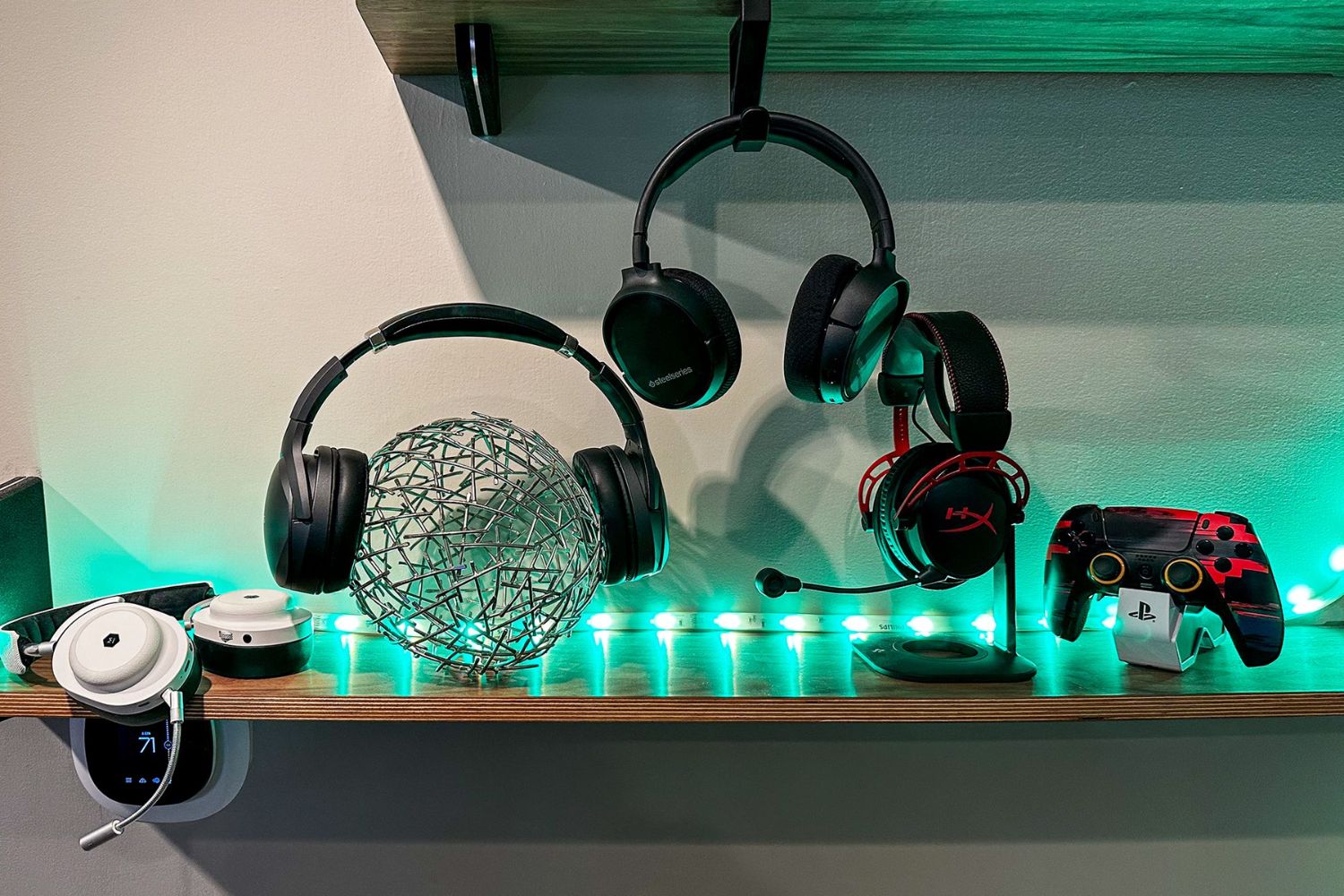Introduction
Using a headset with a microphone on your computer can significantly enhance your communication and productivity. Whether you're engaging in online gaming, video conferencing, or recording audio, a high-quality headset with a reliable microphone is an invaluable tool. This article will guide you through the process of selecting the right headset with a microphone, setting it up on your computer, adjusting mic settings, and providing tips for optimal mic performance.
The integration of a headset with a microphone offers a multitude of benefits, catering to various needs and preferences. From immersive gaming experiences to seamless virtual meetings, the convenience and functionality of a headset with a microphone cannot be overstated. As technology continues to advance, the demand for clear and crisp audio input/output has become increasingly prevalent, making the utilization of a headset with a microphone more essential than ever.
By understanding the nuances of selecting the most suitable headset with a microphone, you can ensure that it aligns with your specific requirements, whether it's for professional use, leisure, or a combination of both. Furthermore, mastering the setup and optimization of the microphone on your computer will enable you to harness its full potential, delivering clear and articulate audio in all your endeavors.
The following sections will delve into the intricacies of this process, equipping you with the knowledge and expertise to maximize the utility of your headset with a microphone. As you embark on this journey, you'll discover the transformative impact that a well-chosen and properly configured headset with a microphone can have on your overall computing experience. Let's dive into the world of PC mic mastery and unleash the full potential of your headset with a microphone.
Choosing the Right Headset with Mic
Selecting the right headset with a microphone is crucial for ensuring optimal audio quality and comfort during extended use. With a myriad of options available in the market, it's essential to consider several factors to make an informed decision. Here's a comprehensive guide to help you choose the perfect headset with a microphone for your specific needs:
Consider Your Usage Scenario
Before delving into the technical specifications, it's important to identify the primary purpose of the headset with a microphone. Are you a passionate gamer seeking immersive audio and clear communication with teammates? Or perhaps you require a headset for professional video conferencing and virtual meetings? Understanding your usage scenario will guide your decision-making process and help narrow down the available options.
Audio Quality and Microphone Performance
When evaluating potential headsets, pay close attention to the audio quality and microphone performance. Look for headsets with high-fidelity audio drivers that deliver rich, immersive sound. Additionally, prioritize microphones with noise-canceling features to minimize background noise and ensure clear voice transmission. Whether you're engaging in intense gaming sessions or participating in important business calls, superior audio and microphone performance are paramount.
Comfort and Ergonomics
Comfort is a crucial aspect of prolonged headset usage. Look for headsets with adjustable headbands, cushioned ear cups, and lightweight designs to minimize fatigue during extended wear. Ergonomic features such as swivel-mounted ear cups and breathable materials contribute to a comfortable and enjoyable user experience, making them ideal for long gaming sessions or marathon work meetings.
Wired or Wireless Connectivity
Consider whether you prefer the freedom of wireless connectivity or the reliability of a wired connection. Wireless headsets offer greater mobility and convenience, while wired options ensure consistent connectivity without the need for recharging. Evaluate the pros and cons of each option based on your specific requirements and usage patterns.
Compatibility and Versatility
Ensure that the chosen headset is compatible with your computer and any other devices you intend to use it with. Additionally, consider the versatility of the headset – can it seamlessly transition between gaming, work, and leisure activities? Versatile headsets that cater to multiple usage scenarios provide excellent value and convenience.
By carefully considering these factors and conducting thorough research, you can make an informed decision when choosing the right headset with a microphone. Remember to prioritize audio quality, microphone performance, comfort, connectivity, and compatibility to select a headset that perfectly aligns with your needs and preferences.
Setting Up Your Headset with Mic
Setting up your headset with a microphone is a straightforward process that can significantly enhance your audio experience on your computer. Whether you're using your headset for gaming, virtual meetings, or content creation, a properly configured setup ensures seamless communication and audio playback. Here's a detailed guide to help you set up your headset with a microphone on your computer:
Step 1: Connection Method
Begin by identifying the connection method for your headset. If you have a wired headset, locate the audio and microphone jacks on your computer. Insert the corresponding headset and microphone plugs into the designated ports. For USB headsets, simply plug the USB connector into an available USB port on your computer. Wireless headsets typically come with a USB receiver that needs to be plugged into a USB port for seamless connectivity.
Step 2: Device Recognition
Once the physical connections are established, your computer should recognize the headset and microphone. Depending on your operating system, you may receive a notification indicating the successful detection of the new audio devices. In some cases, you may need to navigate to your computer's sound settings to ensure that the headset and microphone are recognized as the default audio input and output devices.
Step 3: Adjusting Settings
Access your computer's sound settings to configure the headset and microphone. In Windows, right-click on the speaker icon in the taskbar and select "Open Sound settings." Under the "Output" section, choose your headset as the default playback device. Similarly, under the "Input" section, select your headset's microphone as the default recording device. Adjust the volume levels to your preference and test the microphone to ensure it's capturing sound accurately.
Step 4: Software Installation (if applicable)
Some advanced headsets may come with companion software that offers additional customization options. If your headset includes proprietary software, install it according to the manufacturer's instructions. This software often provides features such as equalizer settings, microphone enhancements, and firmware updates, allowing you to fine-tune the audio and microphone performance to suit your preferences.
Step 5: Testing and Calibration
Once the headset and microphone are set up, it's essential to conduct a thorough test to ensure everything is functioning as intended. Test the audio playback by playing music or a video to confirm that sound is being transmitted through the headset. For the microphone, record a short audio clip and play it back to assess the clarity and quality of the recording. Make any necessary adjustments to the settings based on your testing results.
By following these steps, you can seamlessly set up your headset with a microphone on your computer, optimizing the audio input and output for an enhanced user experience. Whether you're immersing yourself in gaming audio, participating in virtual meetings, or creating content, a well-configured headset and microphone setup will elevate your overall audio experience on your computer.
Adjusting Mic Settings on Your Computer
Adjusting the microphone settings on your computer is essential to ensure optimal audio input and clear voice transmission. By fine-tuning the mic settings, you can eliminate background noise, enhance voice clarity, and customize the input levels to suit your specific preferences. Here's a comprehensive guide to adjusting the mic settings on your computer to maximize the performance of your headset's microphone.
Accessing Sound Settings
To begin adjusting the mic settings, access the sound settings on your computer. In Windows, right-click on the speaker icon in the taskbar and select "Open Sound settings." This will provide access to both the output and input audio devices, allowing you to configure the settings for your headset's microphone.
Microphone Properties
Once in the sound settings, locate the section related to input or recording devices. Here, you will find the properties of your headset's microphone. Click on the microphone device to access its properties, where you can adjust various settings to optimize its performance.
Input Volume and Gain
One of the primary settings to adjust is the input volume or gain. This controls the sensitivity of the microphone, determining how much sound it picks up. Depending on your mic's sensitivity and the surrounding environment, you may need to adjust the input volume to ensure that your voice is captured clearly without being overwhelmed by background noise.
Enhancements and Effects
Some operating systems offer microphone enhancements and effects that can be applied to improve voice clarity and reduce ambient noise. These enhancements may include noise suppression, acoustic echo cancellation, and voice equalization. Experiment with these settings to find the combination that best suits your preferences and environment.
Testing and Monitoring
After making adjustments to the mic settings, it's crucial to test and monitor the microphone's performance in real-time. Speak into the microphone and observe the input levels to ensure that your voice is being accurately captured. Additionally, listen for any background noise or distortions to determine if further adjustments are necessary.
Third-Party Software (if applicable)
In some cases, you may have access to third-party software that offers advanced mic settings and customization options. If your headset's manufacturer provides dedicated software, explore the additional settings it offers, such as mic equalization, noise gate, and voice modulation. These tools can further refine the microphone's performance to align with your specific requirements.
By carefully adjusting the mic settings on your computer, you can optimize the performance of your headset's microphone, ensuring clear and articulate voice transmission in various scenarios. Whether you're engaging in online gaming, virtual meetings, or content creation, a well-configured microphone enhances the overall audio experience, allowing you to communicate effectively and express yourself with clarity.
Tips for Better Mic Performance
-
Optimize Mic Position: Position the microphone at an optimal distance from your mouth to achieve clear and consistent audio input. Experiment with the placement to find the sweet spot where your voice is captured with minimal background noise.
-
Use a Pop Filter: If you frequently engage in vocal recordings or online conversations, consider using a pop filter to minimize plosive sounds and sibilance. A pop filter reduces the impact of air bursts and saliva spray on the microphone, resulting in cleaner audio.
-
Control Ambient Noise: Minimize ambient noise in your environment by choosing a quiet location for mic usage. Consider using noise-canceling software or hardware to further reduce background distractions, ensuring that your voice remains the primary audio input.
-
Regular Maintenance: Keep your microphone and headset clean and well-maintained. Dust and debris can affect audio quality, so regularly inspect and clean the microphone, headset, and connectors to ensure optimal performance.
-
Utilize Mic Monitoring: If your headset supports mic monitoring, enable this feature to hear your own voice in real-time. Mic monitoring allows you to adjust your speaking volume and technique, resulting in clearer and more controlled vocal input.
-
Invest in a Quality Sound Card: If you're using a desktop computer, consider investing in a quality sound card to enhance the audio processing capabilities. A dedicated sound card can significantly improve mic performance and overall audio quality.
-
Experiment with Mic Gain: Adjust the microphone gain settings to find the optimal balance between capturing your voice clearly and minimizing background noise. Fine-tuning the mic gain can lead to improved audio input without distortion or signal clipping.
-
Utilize Voice Modulation Software: Explore the use of voice modulation software to enhance your vocal output. These tools offer a range of effects and adjustments that can refine your voice for specific applications, such as gaming or content creation.
-
Monitor Mic Levels: Keep an eye on the input levels of your microphone to ensure that your voice is consistently captured at an appropriate volume. Avoid speaking too softly or loudly, and make adjustments as needed to maintain a balanced input signal.
-
Consider Acoustic Treatments: If you're setting up a dedicated recording or streaming space, consider implementing acoustic treatments to minimize echo and reverberation. These treatments can create a more controlled audio environment, leading to improved mic performance.
By implementing these tips, you can elevate the performance of your headset's microphone, ensuring clear, high-quality audio input for gaming, communication, content creation, and beyond. With attention to detail and thoughtful adjustments, you can maximize the potential of your microphone, enhancing your overall computing experience.
Conclusion
In conclusion, mastering the utilization of a headset with a microphone on your computer can significantly enhance your audio experience across various activities, including gaming, virtual meetings, content creation, and communication. By carefully selecting the right headset with a microphone that aligns with your specific needs and preferences, setting it up effectively, and optimizing its performance through mic settings adjustments, you can unlock its full potential.
The process of choosing the ideal headset with a microphone involves considering factors such as audio quality, microphone performance, comfort, connectivity, and compatibility. By prioritizing these elements, you can make an informed decision that caters to your usage scenario, whether it involves intense gaming sessions, professional meetings, or versatile everyday use.
Once the headset with a microphone is selected, the setup process is straightforward, involving the connection of physical components and the configuration of sound settings on your computer. This seamless setup ensures that the headset and microphone are recognized as the default audio input and output devices, laying the foundation for an optimal user experience.
Adjusting mic settings on your computer further refines the audio input, allowing you to fine-tune the microphone's sensitivity, apply enhancements, and monitor its performance in real-time. These adjustments contribute to clear voice transmission and minimize background noise, enhancing the overall audio quality during your activities.
Moreover, implementing tips for better mic performance, such as optimizing mic position, utilizing pop filters, controlling ambient noise, and regular maintenance, further elevates the headset's microphone capabilities. These practical strategies empower you to maintain consistent, high-quality audio input, ensuring that your voice is clear and articulate in various usage scenarios.
In essence, the mastery of utilizing a headset with a microphone on your computer encompasses a holistic approach, from the initial selection process to the fine-tuning of mic settings and the implementation of performance-enhancing tips. By embracing this comprehensive approach, you can harness the full potential of your headset with a microphone, elevating your audio experience and communication capabilities across diverse activities.
Ultimately, the integration of a well-chosen and effectively configured headset with a microphone enriches your computing experience, allowing you to immerse yourself in high-quality audio, communicate with clarity, and express yourself effectively in virtual environments. As technology continues to evolve, the mastery of utilizing a headset with a microphone remains a valuable skill, enhancing the way we interact with audio content and communicate in the digital realm.







